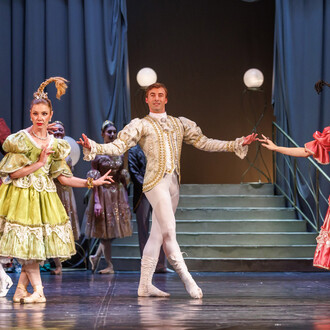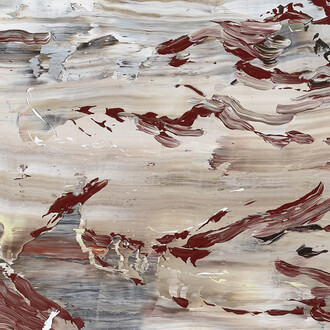The exhibition Il fascino del mito (The fascination of myth) explores the eternal dialogue between past and present through a selection of works that reinterpret mythological themes and motifs with a contemporary lens. Conceived as a journey through time, a compelling dialogue between the ancient and the modern, challenges chronological conventions, which sees us arrive at a suspended dimension, where the ruins of the past meet the language of modern art.
At the heart of this narrative are the works of Giorgio de Chirico, Alberto Savinio, Giulio Paolini, Salvo, and Jorge Méndez Blake, united by an approach that transcends temporal and geographical boundaries. Together, they construct a visual language infused with enigmas and references.
Complementing these works and punctuating the exhibition are a selection of archaeological artifacts, creating a visual bridge between antiquity and the present.
The project, inspired by the success of the London exhibition Mythology reinterpreted—recognized in 2024 as one of the top ten exhibitions of the London autumn art season—now finds a new home in Mazzoleni’s prestigious Turin venue. It celebrates myth as an inexhaustible source of artistic inspiration.
“What shall I love, if not the enigma of things?” asked de Chirico. This question resonates throughout the works of the featured artists: Trophy with the head of Jupiter (1929–30) by de Chirico, a symbol of divine wisdom and power, transforms into a visual enigma. Alberto Savinio’s Jeux d’anges (1930) adds a surreal and dreamlike note to the exhibition. His portrayal of angels in a suspended, timeless context connects to a desire to transcend the present and embrace the mystery of the invisible.
In his vivid and geometrically charged paintings, Salvo captures the spirit of classical ruins and offers a personal vision of archaeological fragments, transformed by the psychedelic light of modernity, as reflected in his own words: “As long as the model can be seen in a new way, because the definition is not complete, why should the search be stopped?” (Salvo, On painting. In the style of Wittgenstein, Paul Maenz & Gerd de Vries, Cologne, 1980).
Giulio Paolini and Jorge Méndez Blake probe the relationship between the present and the past through the concepts of reproduction, citation, and otherness. Paolini’s The other figure (1983), with its exploration of circularity and eternal return, converses with Méndez Blake’s Defend it (Poetry) II (2024), a meticulous depiction of a ruined Greek column crowned with the inscription “Defend it.” The admonition, referring to poetry as revealed by the work’s title, echoes the evocative stone inscriptions of Salvo, disrupting chronological coherence in favour of the power of the message.
The exhibition is accompanied by a catalogue published for the London show. As Benedetta Casini writes in her essay Mythology reinterpreted. A journey through ancient inspiration in modern and contemporary art: “Antiquity, archaeology, ruins are [...] a distance that cannot be bridged. They can only be evoked, perhaps elevated as a virtuous model, or used to escape the clamour of real-time communication.” The artists presented in this exhibition use references to the past not as nostalgic exaltation but as a tool to question the present and project themselves toward the future.















